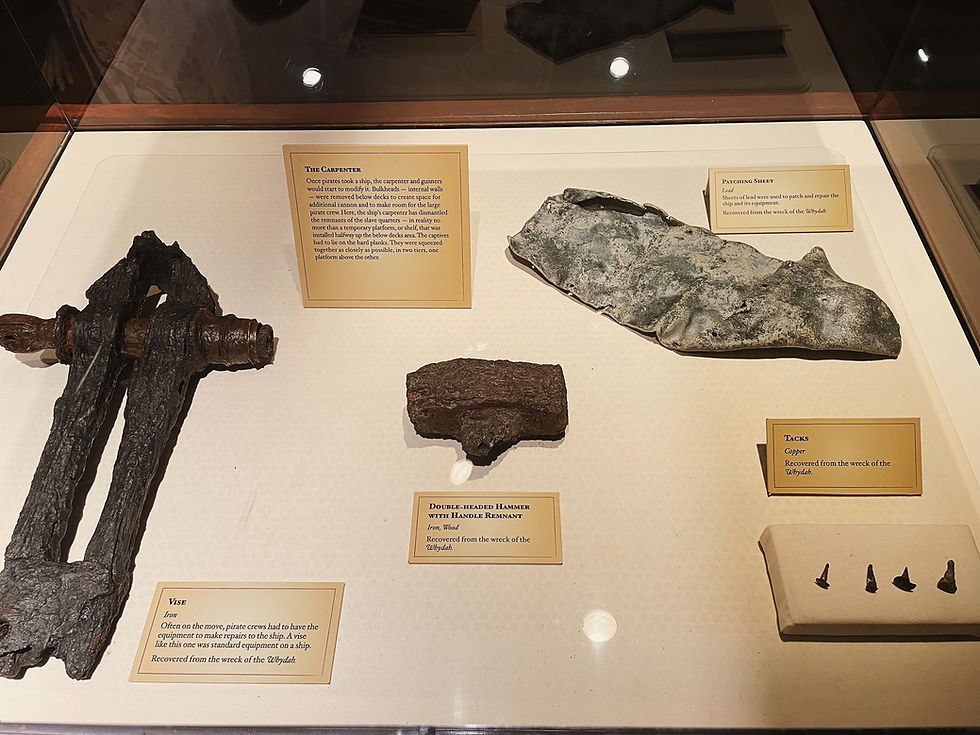Files and Sandpaper
- marcsitkin
- Mar 18, 2021
- 3 min read
Updated: May 15, 2023

Eleven Roman files, as shown in Henry C. Mercer's "Ancient Woodworking Tools"
Excerpted from The Chronicle Vol. 1 no. 13, September 1935
By L. L. Thwing
It is unlikely that we shall ever see a file dating back to the 18th century. or that a claim for such age could be substantiated. Files are, however, very old, and it is claimed that certain chipped flints were intended for files. Certainly primitive races even today use crude files. For example, the natives of Dutch Guina use a rasp, made by bedding a large number of small flints in a slab of cassava root, which holds them firmly, after the wood 1s allowed to dry and harden around the flints. None of the tools of the bronze age have been definitely identified as files. but this, in no wise, precludes the possibilities of their use. There is a Greek word for files derived from the name of the shark whose skin was – and is – used for polishing. The Romans had a word, lima, for files, and another, scorbina, for rasps. Both Vitruvious ( 100 B.C.) and Pliny (50 A.D.) mention files. The latter says that a certain statue in Rome bore a file in its hand.
Roman files have been dug up in Saalburg. By the 12th century, the art of cutting files had advanced, as the monk Theophilus describes two methods of cutting and two methods of case-hardening them with ox horn. Fifteenth century manuscripts show file cutters at work and illustrate both single and double cut files. In da Vinci's sketch book is a design for a file-cutting machine. From 1550 to 1650 a surprising number of books were published, with illustrations giving details of the tools and methods of that period. From these we learn that files were more highly developed than even today. This was because so much of the work was hand work. Very large files were used – so large that one end was supported by a strap or the tool laid on the bench and the work rubbed over it. Rasps with teeth in the form of arcs were illustrated and described before 1800.
Polishing and grinding are very old processes. In fact, one of the cultural ages is called the Polished Stone Age. Both solid rubbing stones and loose sand were used. It is therefore reasonable to assume that these processes have continued in uninterrupted use since that time.

An assortment of abrasives – including a mesh variety not yet invented when this article was written (Mirka Abranet).
There are also certain natural substitutes for sandpaper. The tongue of a certain fish has such sharp bony papillae that it can be used as a sort of flexible rasp. The use of dog fish or shark skin has been mentioned before, and even today such skins are listed in Hammacher & Schlemmer's catalogue. Shave grass is a sort of rush so high in silicates that it can be used as a natural steel wool. Both this and shark skin are mentioned by Plumier ( 1701). But how old is real sandpaper?
ancient carpenter's tools, that he never found it in home-made form, but that the new england dictionary (1772) mentions "emery paper," martin's circle of mechanical arts (1813) speaks of "glass paper," and stoke's complete cabinetmaker's guide (1829) gives directions for making "glass paper" by sprinkling powdered glass on glued cartridge paper. this would indicate that sandpaper, in the strict sense, must be a comparatively modern device. - ed.>ancient carpenter's tools, that he never found it in home-made form, but that the new england dictionary (1772) mentions "emery paper," martin's circle of mechanical arts (1813) speaks of "glass paper," and stoke's complete cabinetmaker's guide (1829) gives directions for making "glass paper" by sprinkling powdered glass on glued cartridge paper. this would indicate that sandpaper, in the strict sense, must be a comparatively modern device. - ed.>




Comments